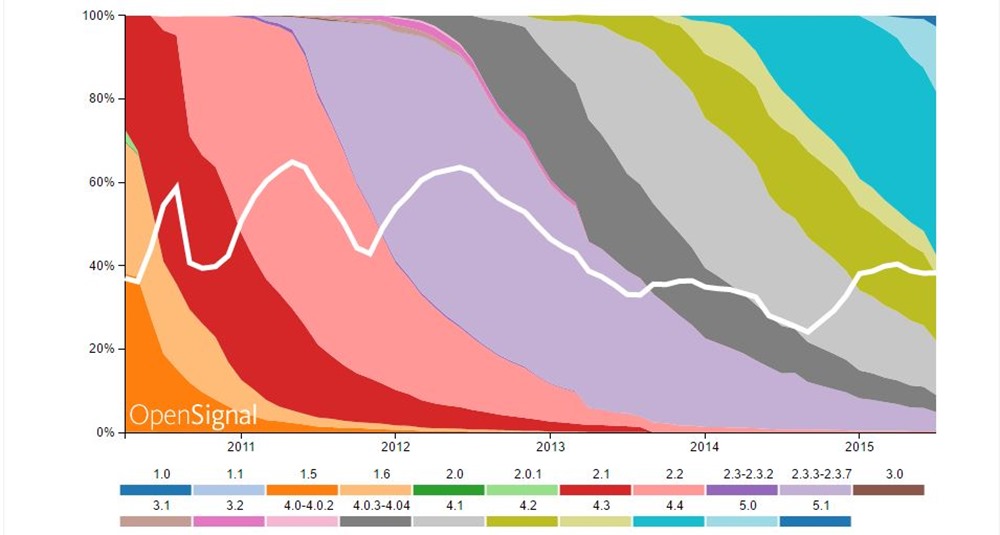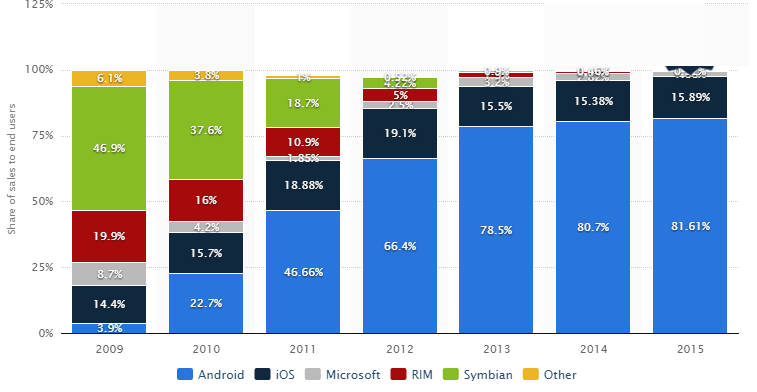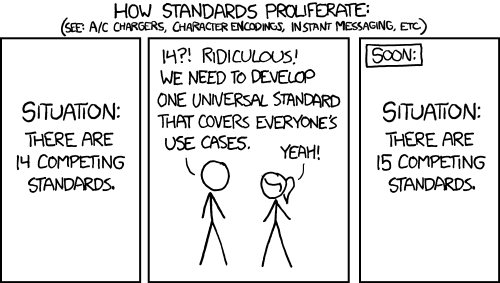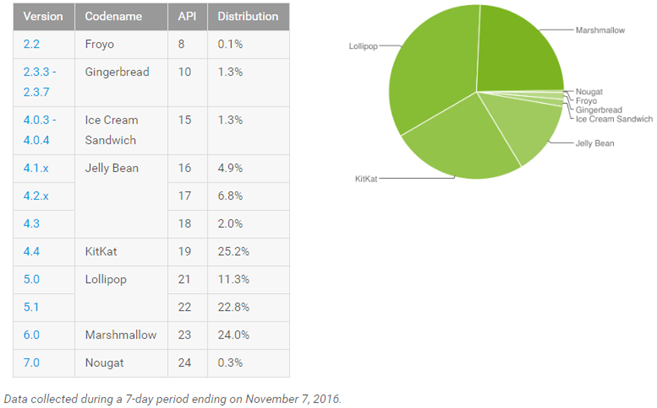Android Fragmentation: A Problem Even Mighty Google Cannot Resolve & You Are the One Paying For It!

Since the day of its conception back in September 2008, Google’s Android has come a long way. In 2008 the Blackberry was the dominant device and with their ever developing hardware, Google knew it had to take drastic measures to ensure that its operating system spread like a wildfire. So the Open Handset Alliance was formed which included firms like Google, Samsung, HTC, Sony, Motorola and others.
The vision that Google had, the flawless execution of the same worked and with the flood of android devices in market, Android managed to grab the biggest pie of the smartphone market . 8 years after its release android is the dominant mobile platform with almost 82% percent share of the worldwide mobile and tablet operating systems market in 2015, according to Statista.

Visual representation of the active mobile devices worldwide, source: Statista
The open ideals that Google pushed helped unprecedented diversity and a magnificent smartphone revolution that despite its persistent effort, Apple’s iOS hasn’t beaten yet. But the operating system dominance came with a cost – Android Fragmentation.
With the open standards, every smartphone manufacturer has the freedom and option to tweak the operating system according to their preference. Manufacturers obviously grabbed the opportunity to push their own apps and tweaked versions of android. Samsung with its bloatware filled TouchWiz and HTC with its Sense UI. Only the Google’s very own Nexus came up with “pure / stock android”.
What is fragmentation?
The main reason for android fragmentation is a plethora of devices, manufacturers skins that sit on top of stock android and even android forks. The most cited reason for the android fragmentation is the slow adoption of newer Android versions.
According to the AndroidCentral based on a 7 day period data collection, only 0.3% of android users are running the latest version of android OS – Nougat. Android 6.0, Marshmallow is at 24% while the combination of Android 5.0 and 5.1, Lollipop come out to 34.1%. Android 4.0, Kitkat despite being released in 2013 holds a 25.2% share.
What is Google doing to combat fragmentation?
Google has tried various strategies over the years to combat fragmentation with mixed success. A lot of new features and security updates come through Google Play Services now. The material design libraries and guidelines were issued to ensure a uniform look and feel across platform. Google tried to enforce manufacturers to release the stock variants of their devices dubbed ‘Google Play Editions’ which failed to take off and was ended quietly.
Recently Google launched its Pixel devices in October – which according to the tech gurus is another strategy to combat fragmentation. The move despite being very ingenious can be considered treacherous by other manufacturers.

Source: XKCD
How Google could fix the problem?
Google could try to put a foot down and enforce manufacturers to support a unified update system, threatening to pull its services. The move however would be against the open ideals that Google has always supported. There is also a risk that some phone makers may even choose to ditch android altogether.
Fragmentation may seem like a problem Google cannot fight, it doesn’t seem to put much of a dent in android’s popularity. There are more than 2 million apps in the Google Play Store now, up from 1.5 million this time last year, according to AppBrain.
That doesn’t mean that things can’t or shouldn’t be improved. Google can at least instruct manufacturers to allow the option to completely uninstall all the preinstalled apps and bloatware if you didn’t want them. Android updates could directly come from Google, or ensured to be released within a limited time frame from the date of the release to ensure faster updates even after the manufacturers tweak the OS.
But if we want fragmentation to end, we have to demand it.

